Table of Contents
Introduction: Why Sustainable Eating Matters More Than Ever
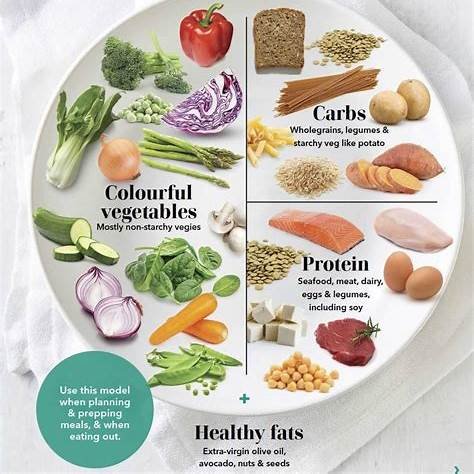
The global food system accounts for 26% of greenhouse gas emissions, 70% of freshwater use, and is the leading driver of deforestation. Yet, 1 in 3 people worldwide suffer from malnutrition. Sustainable eating isn’t just a trendy buzzword—it’s a critical solution to intersecting crises of climate change, health disparities, and food insecurity.
This 3,000-word guide merges nutrition science, environmental data, and practical cooking tips to help you make informed choices.
Whether you’re a student on a budget, a busy parent, or a climate-conscious foodie, you’ll find actionable steps to align your plate with your values.
Chapter 1: The Environmental Impact of Your Plate
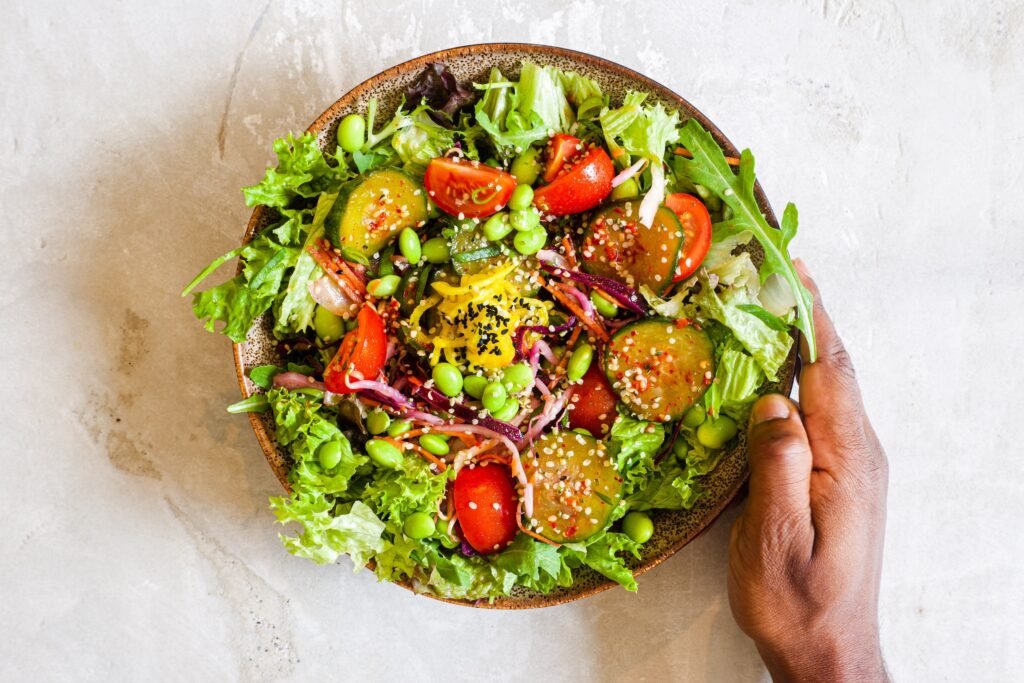
1.1 The Carbon Footprint of Common Foods
- Beef: 60 kg CO2 per kg (equivalent to driving 150 miles).
- Lentils: 0.9 kg CO2 per kg.
- Cheese: 21 kg CO2 per kg (fermentation and livestock feed).
Source: 2023 FAO Report
Action Step: Replace one beef meal weekly with legumes to reduce your annual carbon footprint by 220 lbs.
1.2 Water Usage: Hidden Costs
- Avocados: 70 gallons per fruit (often grown in water-scarce regions).
- Almonds: 1,900 gallons per pound.
- Potatoes: 34 gallons per pound.
Solution: Opt for drought-resistant crops like sorghum or chickpeas.
1.3 Land Degradation and Biodiversity Loss
- Palm Oil: Linked to 8% of global deforestation (orangutan habitats destroyed).
- Soy Production: 80% feeds livestock, not humans.
Ethical Swap: Choose RSPO-certified palm oil or sunflower oil.
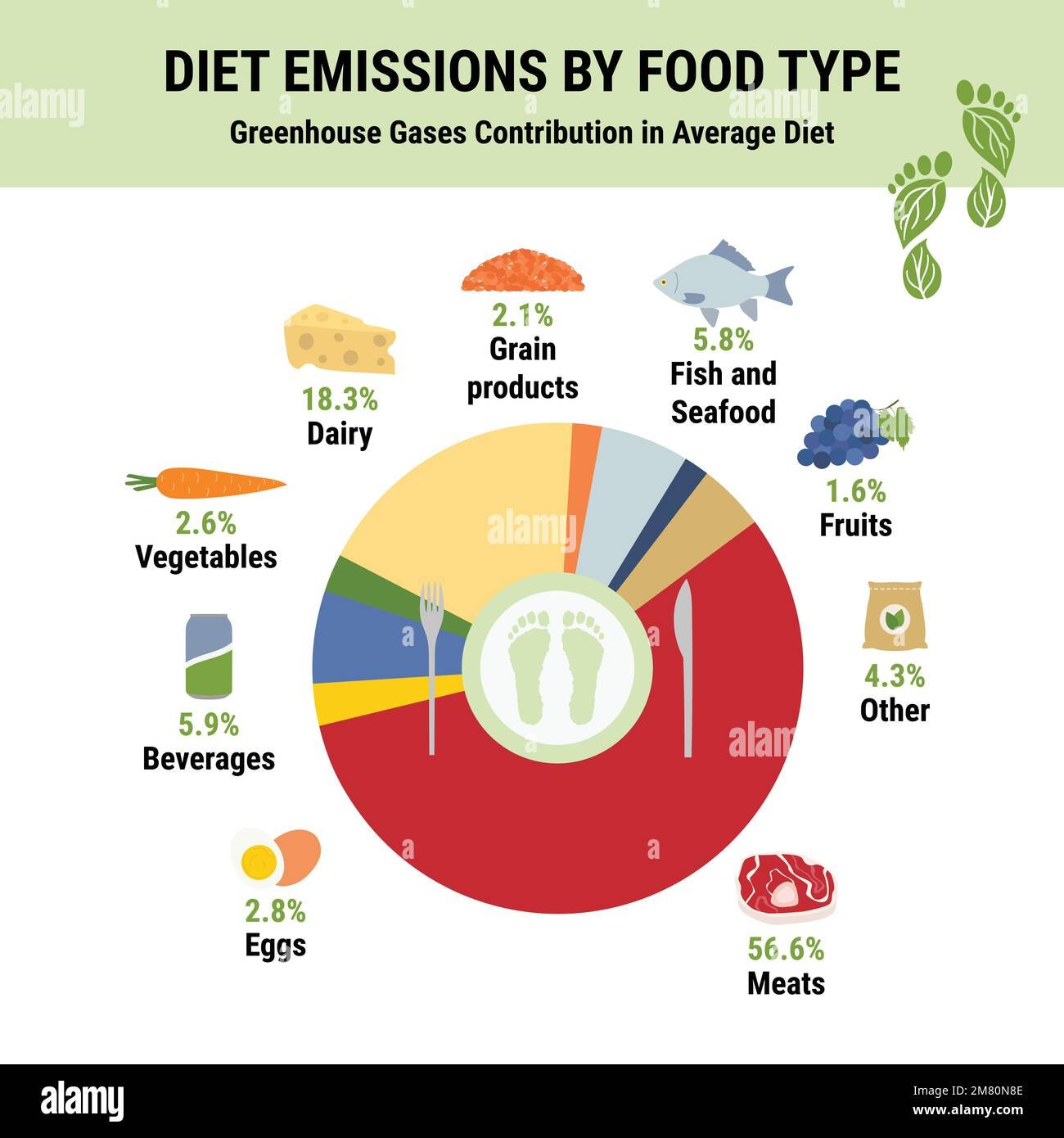
Chapter 2: Building a Nutrient-Dense, Sustainable Diet
2.1 The Plate Model Reimagined
- 50% Plants: Seasonal veggies, fruits, legumes.
- 25% Whole Grains: Quinoa, oats, farro (regenerative farming brands).
- 25% Sustainable Proteins: Sardines (low mercury), tofu, pasture-raised eggs.
Pro Tip: “Diversify protein sources to reduce soil depletion,” advises Dr. Marion Nestle, nutrition professor at NYU.
2.2 Superfoods with Low Impact
- Kelp: Absorbs CO2, rich in iodine.
- Millet: Drought-resistant, high in magnesium.
- Mussels: Filter ocean water, 20g of protein per serving.
Recipe Idea: Millet & Roasted Veggie Bowl with tahini-kelp dressing.
2.3 The Supplement Dilemma
- Vitamin B12: Essential for vegans; choose brands with recyclable packaging.
- Omega-3s: Algae oil vs. fish oil—algae is more sustainable.
Chapter 3: Budget-Friendly Sustainable Eating
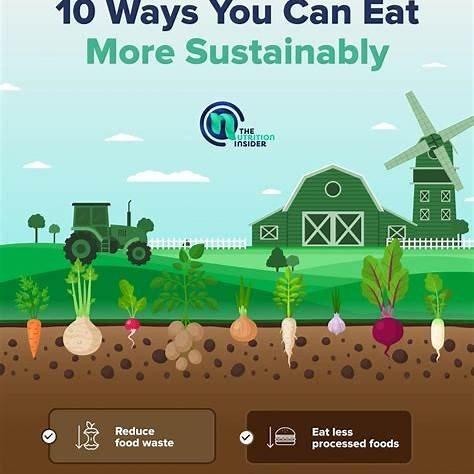
3.1 Meal Planning to Reduce Waste
- The average family wastes $1,500 yearly on uneaten food.
- Use-It-All Strategies:
- Turn veggie scraps into broth.
- Blend overripe fruit into smoothies or muffins.
3.2 Affordable Staples
- Canned Sardines: $2.50 per can, rich in omega-3s.
- Frozen Veggies: Often more nutrient-dense than fresh (flash-frozen at peak ripeness).
- Bulk Bin Finds: Lentils, rice, spices (cut packaging costs by 80%).
Case Study: A family of 4 saved $200/month by switching to plant-based meals 3x/week.
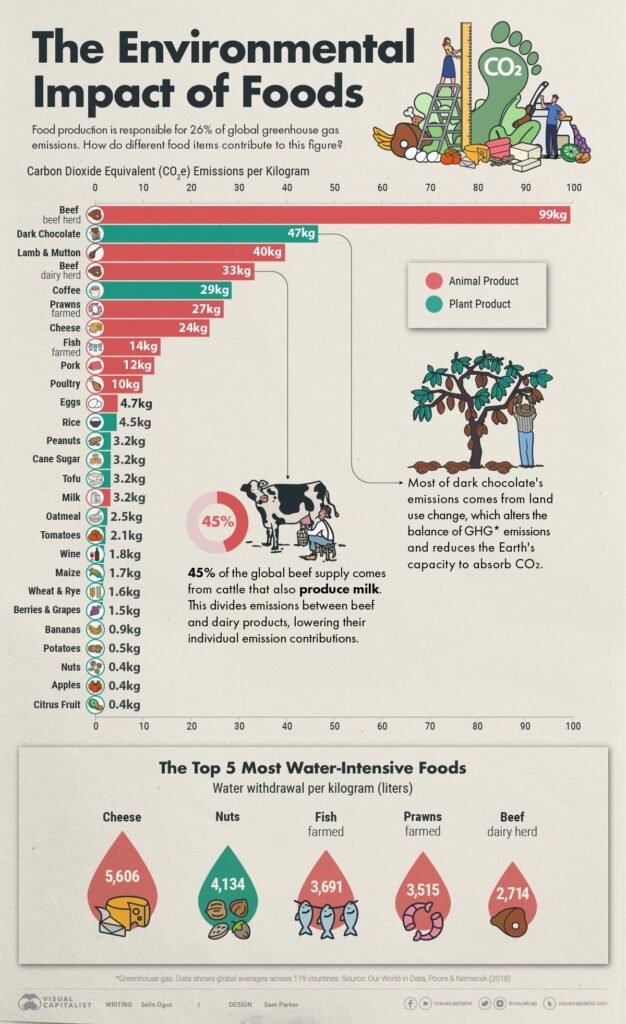
3.3 Growing Your Own Food
- Microgreens: 7-day harvest, 40x more nutrients than mature greens.
- Container Gardening: Herbs, tomatoes, peppers (even in apartments).
Chapter 4: Debunking 5 Sustainable Diet Myths
- Myth: “Plant-Based Diets Are Always Eco-Friendly.”
Truth: Almond milk uses 60% more water than oat milk. - Myth: “Local Food Is Better for the Planet.”
Truth: Transportation accounts for only 6% of food’s carbon footprint—what you eat matters more than where it’s from. - Myth: “Organic = Sustainable.”
Truth: Organic farms can have lower yields, requiring more land.
Chapter 5: Global Recipes for a Healthier Planet
5.1 West African Peanut Stew
- Ingredients: Sweet potatoes, peanut butter, kale, chickpeas.
- Sustainability Score: Low water footprint, 100% plant-based.
5.2 Mexican Lentil Tacos
- Ingredients: Lentils, turmeric (mimics beef color), avocado.
- Emission Savings: 5x lower CO2 than beef tacos.
5.3 Thai Kelp Noodle Salad
- Ingredients: Kelp noodles, sesame oil, lime, chili.
- Why Kelp? Absorbs excess ocean nitrogen from farm runoff.
Chapter 6: Navigating Labels and Certifications
- Fair Trade: Ensures farmer wages, but doesn’t address emissions.
- Regenerative Organic: Combines soil health, animal welfare, and fairness.
- Marine Stewardship Council (MSC): Sustainable seafood standard.
Red Flags: “Natural” (unregulated term) vs “Non-GMO Project Verified.”
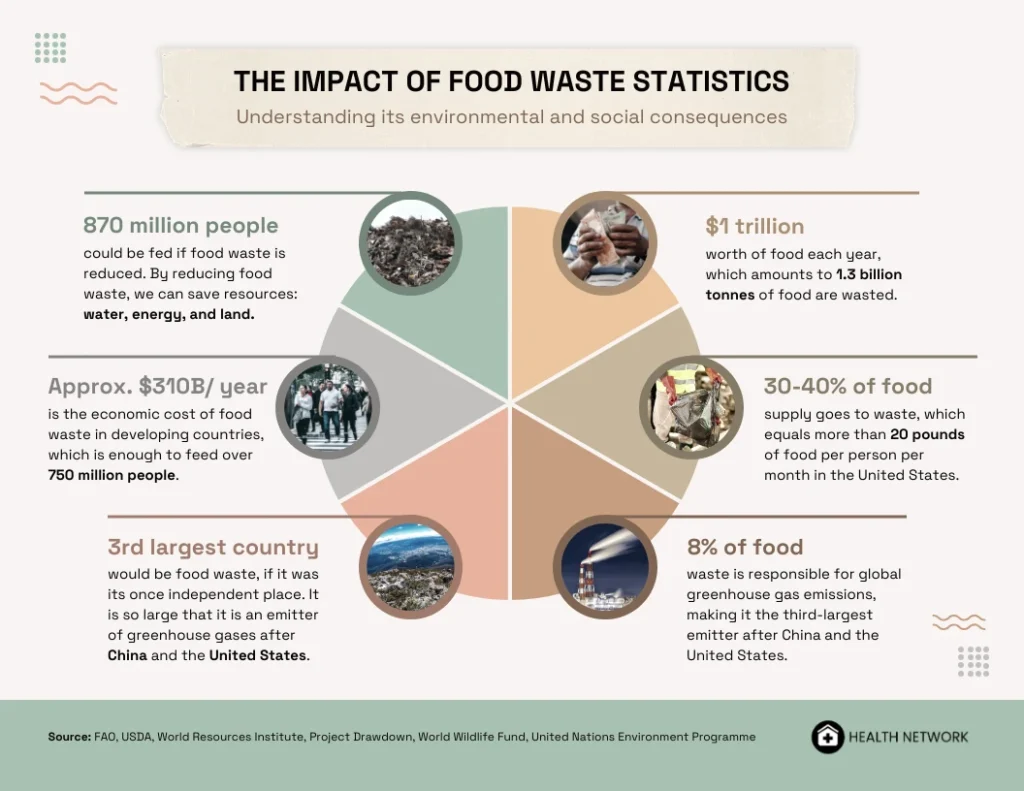
Chapter 7: The Future of Food
- Lab-Grown Meat: 90% lower emissions, but high energy use.
- Vertical Farming: 70% less water, urban accessibility.
- Insect Protein: Crickets offer 65g of protein per 100g (UN-endorsed).
Ethical Debate: Should we prioritize tech solutions or traditional farming?
FAQs: Your Sustainable Eating Questions Answered
Q: Is a vegan diet the most sustainable?
A: Not always. Brazilian soy for tofu can drive deforestation—opt for North American-grown.
Q: How can I afford sustainable seafood?
A: Choose canned sardines or MSC-certified frozen fish.
Q: Can I compost without a yard?
A: Yes! Try electric composters like Lomi or community drop-offs.
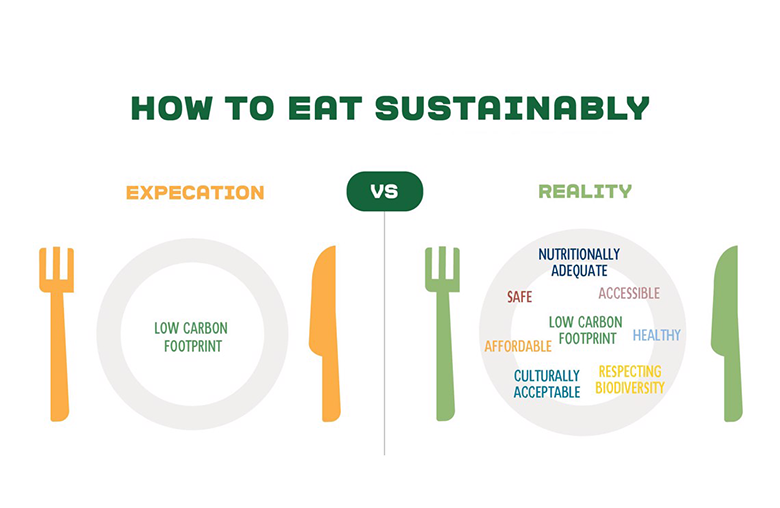
Conclusion: Small Changes, Big Impact
Sustainable eating isn’t about perfection—it’s about progress. Start with one change: Meatless Mondays, a balcony herb garden, or switching to oat milk. Over time, these choices compound into transformative benefits for your health and the planet.
Your Action Plan:
- Audit your pantry for 3 unsustainable items.
- Join a CSA (Community Supported Agriculture) program.
- Share this guide to inspire others!
Need More? Explore our Boost Protein in Your Diet
This guide is incredibly insightful and practical, offering a well-rounded approach to making informed food choices. By combining nutrition science and environmental considerations, it provides a holistic view that’s both educational and inspiring. The actionable steps are adaptable to various lifestyles, making it accessible for everyone. How can this guide be tailored to address specific dietary restrictions while maintaining its focus on sustainability and affordability?
Thanks so much! I’m really glad the guide resonated with you. I’m working on adding more flexible tips for different diets—like gluten-free or plant-based—while keeping it sustainable and budget-friendly. If you have any ideas or needs, I’d love to hear them!